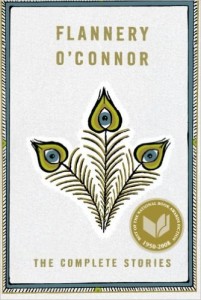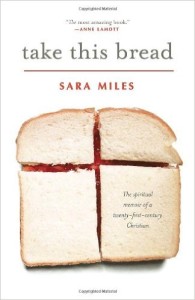In celebration of Theological Libraries Month, former Assistant Librarian Erin Quarterman asked The Seattle School’s faculty and staff to recommend texts and films that have influenced movement in their theology. Here, Alumni Programs Coordinator Daniel Tidwell (Master of Divinity, ’10) reflects on some of his recommendations. And in case you missed it, check out Kate Davis’s thoughts on how fictional narratives have shaped her approach to theology.
My favorite advice I’ve given myself as a writer is this: “The best reading of your poem is your poem’s best reading of you.” It’s strange to give yourself advice. But it’s stranger to imagine that we aren’t being shaped by the stories we tell. The act of concretizing living stories into words is, in effect, a means of setting our bodies free to dance around the story. To read it backwards and forwards, catching our breath between the lines.
The stories that shape me theologically are the stories that invite me to see and tell my own story differently—to believe in a God and a world bigger than I could imagine on my own. The Christian story is grounded in the presence of God who breaks in on our reality, making spaciousness within and among us in the particular contexts of our human lives.
Theological shifts are as much a matter of the body and heart as they are of the brain, and stories that spark theological shifts do so by tapping into our lived experiences of our deepest dread and desire—categories written in our bodies.
What follows are four of the categories by which I understand stories to shape us. In each category, I’ve recommended texts and films that I’ve found to be personally significant shapers of how I think theologically. If you’re near The Seattle School this month, I’d recommend that you stop by the library and take a look at all the books and films our staff and faculty have recommended in celebration of Theological Libraries Month.
Stories write us.
What I’ve learned is that careful, thoughtful, and spirited theologians share a sensibility understood implicitly by the best authors and filmmakers—they know that stories shape our imagination. Instead of choosing one text to recommend in this category, I’ve chosen a collection.
An anthology, like the collected stories of scriptures, offers many narratives that follow their own internal arcs. But the stories also play together to invite a reading of the whole in light of the parts and the parts in light of the whole.
 For an anthology about the inbreaking of God, I can do no better than The Complete Stories of Flannery O’Connor. But to remind us that God’s inbreaking isn’t all apocalypse and thunder, I’ve paired it with my favorite film about Christmas, saints, and imagination. Millions, the 2004 film directed by Danny Boyle, invites us to let sacred stories write us through the power of imagination and hope.
For an anthology about the inbreaking of God, I can do no better than The Complete Stories of Flannery O’Connor. But to remind us that God’s inbreaking isn’t all apocalypse and thunder, I’ve paired it with my favorite film about Christmas, saints, and imagination. Millions, the 2004 film directed by Danny Boyle, invites us to let sacred stories write us through the power of imagination and hope.
Stories also right us—not in a moral sense, but in the sense of setting aright that which has been upended.
Some stories have the power to turn what we have known on end in such a way that we realize what we have always known is truly the thing that was upside down. One way that we notice stories righting us is in the response of our bodies—the inner-ear equilibrium-spinning that makes us pause and take inventory before we can take our next step.
For this category I’m offering a documentary film double-feature: Fight Church and A Brony Tale (both released in 2014). When I saw these two films at the Seattle International Film Festival, each one left me with a deeply visceral response, and each left me with greater clarity surrounding how I think about what is good news in the context of competing masculinities in USAmerica.
Another way that stories shape us theologically is that stories rite us.
In a real way, the best stories are ones in which we undergo a transformation through participation. Be it Where the Wild Things Are, or the Harry Potter series, there are stories (often from childhood) that we’ve experienced that invite us into bigger communities, narratives, and worlds. These are stories we undergo, and they capture our imaginations by naming truth and naming us in inarticulable ways. Like liturgical symbols, these stories don’t disclose doctrine, but they offer glimpses into mystery that pull us deeper in our journeys into God.
 One book that captured me in just such a way was Sara Miles’s spiritual memoir Take This Bread. This story gave me a taste for sacrament that left me hungry and satisfied enough to keep coming back to a eucharist table that was more hospitable than I could ever have imagined. And again, it’s through waking our imaginations that these stories become rites whereby we enter deeper into God and our own stories; whereby we experience what it is to be beloved.
One book that captured me in just such a way was Sara Miles’s spiritual memoir Take This Bread. This story gave me a taste for sacrament that left me hungry and satisfied enough to keep coming back to a eucharist table that was more hospitable than I could ever have imagined. And again, it’s through waking our imaginations that these stories become rites whereby we enter deeper into God and our own stories; whereby we experience what it is to be beloved.
For me, the recent film Song of the Sea (2014) has similarly awakened my imagination, inviting me to more. Its beauty and story open space to experience a world where the gift of our whole humanity is truly welcomed.
And finally, in a profound way, stories wright us.
It’s an archaic term to be sure, related to the old English word for work. In its best sense, literature works us. It works liturgically—the work of the people drawing us into the narrative patterns and structures of story that are bigger and older than us. These patterns are deeply enculturated ways of seeing the world and imagining who God is and who we are. Stories—especially old, culturally and theologically important stories—are like people. That is to say, each one self-discloses, teaching us how they want to be read.
The best of films always unfold in this way, teaching us how to watch them as we watch them over and over. One such readily available film is The Babadook (2014). This film asks you to allow yourself to enter the fantastical world of this suspense story, extending an invitation to the parts of you most in need of kindness.
And for a final text, I recommend a book that has taught me much about learning to pay attention to the patterns that shape how we live in and see the world. A Pattern Language is a classic architecture text that invites us to believe that what has come before might lend a way forward for the challenges we face as we try to live well together. It’s a book that teaches us about how to read stories by teaching us how to pay attention to how stories want to be read—if you let this book work on you, you won’t ever be able to see the world the same.

